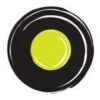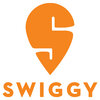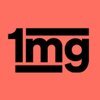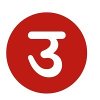
i
Bada Business
Filter interviews by
Clear (1)
Bada Business Business Analyst Interview Questions and Answers
Bada Business Business Analyst Interview Experiences
1 interview found
I applied via Naukri.com and was interviewed before May 2020. There was 1 interview round.
Interview Questionnaire
1 Question
- Q1. Related to V LOOKUP Power BI and Pivot
Interview Preparation Tips
Top trending discussions






Interview questions from similar companies

Interview Questionnaire
1 Question
- Q1. Question 1: General HR questions, some based on the CV Question 2: A marketing specific question
Interview Preparation Tips
Experience: The test basically tests your ability to solve questions as quickly as possible as it's a 60 minute test for 60 questions. The level of difficulty is pretty decent, so one just needs to be focused right from the beginning. English can trouble a bit, so some practice in English sections is also advisable.
Tips: Prepare from Arun Sharma Quantitative Aptitude and Logical Reasoning for CAT. It's a wholesome book and has enough questions to practice and build concepts. Join a test series so that you get a timed analysis of your performance, the ability to skip tough questions and to score as many marks as possible.
Duration: 40 minutes
Round: Group Discussion
Experience: It went pretty well. We had a great discussion. The approach was to list out all the problems one by one and think of probable solutions for each of them. During this, general group dynamics should be taken in consideration. Respect the views and thoughts of other people. Add value to the discussion by thinking critically and bringing new content every now and then. Always be specific and speak to the point.
Tips: Read. Read and Read.
Follow google news, read relevant articles in newspapers, magazines, social media sites or any other place.
Follow Quora, It'a an amazing source to boost your knowledge around any topic.
Duration: 50 minutes
Round: HR Interview
Experience: Be spontaneous, little humorous and lastly very confident. Communication skills improve with time, so start as early as possible. Take part in discussions. Speak up !
Tips: Have a sound knowledge about the industry and the company. They just check your approach. So be very clear and critical on the approach. Have good reasons to back what ever you present. Rest will be fine.
Skills: Communication And Confidence, Analytical Skills, Business Logic, Business Acumen
College Name: Institute of Management, Nirma University

Interview Questionnaire
3 Questions
- Q1. General HR questions, some based on the CV
- Q2. A marketing specific question
- Q3. Weight of an aircraft
- Ans.
The weight of an aircraft is crucial for its performance and safety.
The weight of an aircraft includes the weight of the aircraft itself, fuel, passengers, cargo, and any other equipment on board.
The weight of an aircraft is measured in pounds or kilograms.
The weight of an aircraft affects its takeoff and landing performance, as well as its fuel efficiency and range.
Aircraft manufacturers provide maximum takeoff and la...
Interview Preparation Tips
Experience: The test basically tests your ability to solve questions as quickly as possible as it's a 60 minute test for 60 questions. The level of difficulty is pretty decent, so one just needs to be focused right from the beginning. English can trouble a bit, so some practice in English sections is also advisable.
Tips: Prepare from Arun Sharma Quantitative Aptitude and Logical Reasoning for CAT. It's a wholesome book and has enough questions to practice and build concepts. Join a test series so that you get a timed analysis of your performance, the ability to skip tough questions and to score as many marks as possible.
Round: Group Discussion
Experience: It went pretty well. We had a great discussion. The approach was to list out all the problems one by one and think of probable solutions for each of them. During this, general group dynamics should be taken in consideration. Respect the views and thoughts of other people. Add value to the discussion by thinking critically and bringing new content every now and then. Always be specific and speak to the point.
Tips: Read. Read and Read.
Follow google news, read relevant articles in newspapers, magazines, social media sites or any other place.
Follow Quora, It'a an amazing source to boost your knowledge around any topic.
Round: HR Interview
Experience: Be spontaneous, little humorous and lastly very confident. Communication skills improve with time, so start as early as possible. Take part in discussions. Speak up !
Tips: Have a sound knowledge about the industry and the company. They just check your approach. So be very clear and critical on the approach. Have good reasons to back what ever you present. Rest will be fine.
Round: Guesstimate Interview
Experience: A very commonly asked guesstimate problem. Ask as many questions as possible to clear out the situation for yourself and get enough hints to solve the problem. Break it down into smaller sections and solve each section individually.
Tips: Follow "case in point", Analytics Vidya and similar blogs and websites to practice more and more guesstimates.
General Tips: There are so many opportunities. You just need one. Be focused on that ONE.
Skill Tips: Take part in discussions among your friends. Read books and quora to get more content. Practice as many questions as possible for aptitude. Discuss problems and have critical analysis sessions to understand things with a company's perspective.
Skills: Communication , Aptitude, Business Acumen
College Name: IIT GUWHATI
Motivation: To learn the operations and Logistics of the e-commerce industry.
Funny Moments: There will be many while you'll be preparing with your friends. :D
All the best.

I applied via Company Website and was interviewed before Mar 2020. There was 1 interview round.
Interview Questionnaire
3 Questions
- Q1. Write a program on bubble sort ?
- Ans.
Bubble sort is a simple sorting algorithm that repeatedly steps through the list, compares adjacent elements and swaps them if they are in the wrong order.
Start from the first element and compare it with the next element
If the first element is greater than the next element, swap them
Repeat this process for all elements in the list
Continue this process until no more swaps are needed
- Q2. Define Turing Machine ?
- Ans.
A Turing Machine is a theoretical device that can simulate any algorithmic computation.
It was proposed by Alan Turing in 1936 as a model for computation.
It consists of a tape, a head that can read and write symbols on the tape, and a set of rules for transitioning between states.
It can simulate any algorithmic computation, making it a powerful tool for theoretical computer science.
It is often used as a theoretical basi...
- Q3. Explain hash function
- Ans.
A hash function is a mathematical function that converts input data of arbitrary size into a fixed-size output.
Hash functions are used to index data in hash tables.
They are also used in cryptography to securely store passwords.
Examples of hash functions include MD5, SHA-1, and SHA-256.
Interview Preparation Tips
Skills evaluated in this interview

I appeared for an interview before Nov 2019.
Interview Questionnaire
6 Questions
- Q1. Visualize a Uber database of drivers and riders(users) and write a SQL query to get the top 100 drivers by city.
- Ans.
SQL query to get top 100 Uber drivers by city
Join drivers and users tables on city
Aggregate driver ratings and count of rides
Order by rating and count of rides
Limit to top 100
- Q2. How do you optimize the listing of Restaurants on Swiggy?
- Ans.
Optimizing the listing of Restaurants on Swiggy involves using data-driven strategies to improve visibility, relevance, and user experience.
Analyze user behavior and preferences to understand their needs and preferences
Implement a ranking algorithm based on factors like ratings, reviews, popularity, and delivery time
Optimize search functionality to ensure accurate and relevant results
Collaborate with restaurants to imp...
- Q3. What are the major differences between a Linear Regression and a Logistic Regression?
- Ans.
Linear Regression is used for continuous data while Logistic Regression is used for categorical data.
Linear Regression predicts continuous values while Logistic Regression predicts probabilities.
Linear Regression uses a straight line to fit the data while Logistic Regression uses an S-shaped curve.
Linear Regression uses Mean Squared Error as the cost function while Logistic Regression uses Log Loss.
Linear Regression is...
- Q4. What is the Bias Variance trade-off and name some models with high bias and low variance?
- Ans.
Bias-Variance trade-off is the balance between overfitting and underfitting. High bias models are simple but inaccurate, low variance models are complex but overfit.
Bias-Variance trade-off is a fundamental concept in machine learning.
High bias models are simple and have low variance, but are inaccurate.
Low bias models are complex and have high variance, but can overfit the data.
Examples of high bias models are linear r...
- Q5. A car manufacturer has observed a decline in profits by 40% year over year. What would be the possible reasons for this?
- Ans.
Possible reasons for a car manufacturer's decline in profits by 40% year over year
Decreased demand for cars due to economic downturn
Increased competition from other car manufacturers
Rising production costs and expenses
Decline in consumer confidence and spending
Changes in government regulations impacting the automotive industry
- Q6. If you have 100 unbiased coins and one of them is defective. You have a weighing balance to check the weight of the coins. What is the minimum number of times you need to weigh the coins to identify the de...
Interview Preparation Tips
Skills evaluated in this interview

Interview Preparation Tips
Experience: it was a basic test, CAT level questions and can be easily cleared
Tips: keep your cool, don't panic
Duration: 60 minutes
Total Questions: 60
College Name: IIT BOMBAY

Business Analyst Interview Questions & Answers
Ola Cabsposted on 21 Feb 2015
Interview Questionnaire
3 Questions
- Q1. Give some quantifiable factors you can use to rate( for comapny's purpose) among a repository of cab drivers we have?
- Ans.
Quantifiable factors to rate cab drivers for company's purpose
Customer ratings and feedback
Number of completed trips
Average trip duration
Percentage of on-time pickups
Accident and traffic violation history
Vehicle cleanliness and maintenance
Driver punctuality and professionalism
- Q2. If you are on the selection committee of BCCI what would be your criterion for choosing between Yuvraj Singh and Stuart Binny for the World Cup squad?
- Ans.
The criterion for choosing between Yuvraj Singh and Stuart Binny for the World Cup squad would be based on their recent performance, fitness, and team balance.
Evaluate recent performance of both players
Assess fitness levels of both players
Consider team balance and required skill sets
Analyze pitch and weather conditions of the tournament
Take into account the opposition teams and their strengths and weaknesses
- Q3. Some questions on programming (Pseudo Codes )
Interview Preparation Tips
Experience: There were questions on general aptitude like work and time, probability, and some questions were on data interpretation, coding and decoding, etc., most of the questions were very simple...but I felt the data interpretation questions to be a bit tricky (completely my opinion though).. ON THE BASIS OF THIS TEST THEY SHORTLISTED ROUGHLY 15 OUT OF 150 (again a rough figure)
Tips: Manage your time wisely...start with the type of questions you feel comfortable...try to attempt all the questions....improve your speed while practicing.
Duration: 45min minutes
Total Questions: 45
Round: Test
Experience: We were given 3 questions to solve in 30 min duration.Later we were told to walk them through our solution . Two of them were on probability(one random variables and the other on basic probability) and one was on estimating the area of an irregular figure , given some tools.
Tips: Get all the doubts regarding the questions clarified .As you have to explain your solution, it would be helpful if you could pen down all the steps clearly ( as it shows them that your thought process is an organised one). Use pictorial representation if needed. When they propose some other method be open to it and be open to any method they propose and be clear with the method you adopted. Even if you didn't arrive at the final answer, try to communicate your idea on solving the problem( most of the times they will listen to what you say).
Duration: 30min minutes
Total Questions: 3
Round: Other Interview
Experience: They were basically looking for quantifiable factors...so think of some quantifiable factors like the number of Times they are available to you in a day and the number of service providers they engage with. etc.,
For the second question again use quantifiable factors which make sense.
Tips: They patiently listened to what I said . So, be calm and don't be in a haste.
Skill Tips: Be a bit quick while solving the Aptitude questions....Know about the company before you go in for the interview process....No need of any prior knowledge in R language ...They just tested my Willingness to learn new things.
Skills: Aptitude Skills, Communication Skills, Structured thought process, Out of the box thinking, Basic programming skills ( very basic)
College Name: IIT KANPUR

Interview Preparation Tips
Experience: It was a test of moderate level.
20 ques in 20 min.
Basic focus was speed and accuracy.
Tested calculation speed.
Tips: Try to decide which ques to answer and which ones to leave.
Its very important not to get stuck in any 1 ques and waste time. MOVE ON!
Duration: 20 minutes
Total Questions: 20
Round: Technical Interview
Experience: Hi ! i dont remember the question but I do remember that they were easy.
The interviewers are there to test you not to embarrass you. or humiliate you.
They dont expect you to answer every ques so no need to get frustrated if you get a couple of them wrong.
Tips: Go easy...
If you dont know answer to a ques , dont panic,. They are willing to qive you points for your approach.
General Tips: Relax at all times
Skill Tips: Just practice. Whenever you are on facebook solve a couple of brain teasers.
Skills: Aptitude
College Name: DTU
Motivation: Good Future prospects!

Interview Questionnaire
1 Question
- Q1. How do you measure growth of startup
- Ans.
Startup growth can be measured through various metrics such as revenue, user acquisition, market share, and customer satisfaction.
Revenue growth is a key metric for measuring startup growth. This can be tracked through sales figures, profit margins, and overall revenue growth rate.
User acquisition is another important metric. This can be measured through the number of new users acquired over a period of time, as well a...

I applied via Referral and was interviewed before May 2020. There was 1 interview round.
Interview Questionnaire
1 Question
- Q1. How can you understand the supply of restaurant in a particular area of a city ?
- Ans.
To understand the supply of restaurants in a particular area of a city, we can use various methods.
Collect data from online directories like Yelp, Zomato, etc.
Conduct surveys to gather information about the number of restaurants in the area.
Analyze the population density and demographics of the area to estimate the demand for restaurants.
Check the number of restaurant permits issued by the local government.
Use GIS mapp...
Interview Preparation Tips
Bada Business Interview FAQs
Recently Viewed
Tell us how to improve this page.
Bada Business Interviews By Designations
- Bada Business Business Consultant Interview Questions
- Bada Business Regional Manager Interview Questions
- Bada Business Senior Specialist Interview Questions
- Bada Business Sales Interview Questions
- Bada Business Executive/ Sr Executive - Administration Interview Questions
- Bada Business Video Editor Interview Questions
- Bada Business Business Analyst Interview Questions
- Bada Business Salesman Interview Questions
- Show more
Interview Questions for Popular Designations
- Business Development Executive Interview Questions
- Business Development Manager Interview Questions
- Business Development Associate Interview Questions
- Senior Business Analyst Interview Questions
- Business Associate Interview Questions
- Business Development Interview Questions
- Business Executive Interview Questions
- Business Manager Interview Questions
- Show more
Business Analyst Interview Questions from Similar Companies
Bada Business Business Analyst Reviews and Ratings
based on 1 review
Rating in categories
|
Business Consultant
154
salaries
| ₹1.5 L/yr - ₹8 L/yr |
|
Assistant Manager
40
salaries
| ₹2.8 L/yr - ₹9 L/yr |
|
Regional Manager
39
salaries
| ₹3.2 L/yr - ₹7.7 L/yr |
|
Branch Manager
33
salaries
| ₹3 L/yr - ₹5.7 L/yr |
|
Sales Executive
32
salaries
| ₹1 L/yr - ₹4 L/yr |

upGrad

BYJU'S

Unacademy

Upstox
- Home >
- Interviews >
- Bada Business Interview Questions >
- Bada Business Business Analyst Interview Questions











